Web 3.0 is the third generation of the Internet—a global network that permits intelligent interactions between all its users and devices.
Web 1.0 was the early Internet that persisted until about 2000. At first, websites were just places you could read information posted on servers and interact with such servers in simple ways. There were search engines, and there were e-commerce sites.
Web 2.0 arose following the turn of the century. It was far more interactive, far more collaborative, and far more capable. There were technical reasons why, not least of which was the rapidly improved bandwidth available to users, and servers. It is this generation of the web that gave us smartphones and mobile computing. Web 2.0 could support near real-time interactions and thus collaborative activity was feasible. Social networks like Facebook and Twitter were part of this, but so were graphical multiplayer games. It also included the birth of Big Data and machine learning algorithms that sifted through it.
Web 3.0 is defined by intelligence. This intelligence is not just in interactions between people and websites, but between software and software. And, there’s more than that. The difference between Web 2.0 and Web 3.0 has multiple aspects.
Web 3.0 elements include an Underlying File System, Digital Identities, Micropayments, Permissions, Trust, Semantic Data and Information, Software Negotiating with Software, Bots, AI, Big Data, 3D Graphics, Complete Connectivity (Ubiquity), and other elements. For a deeper dive into this subject, we recommend and thank Dr. Robin Bloor for the above definition.
Web 3.0 might be viewed as a return to the original Web, "no permission is needed from a central authority to post anything ... there is no central controlling node, and so no single point of failure ... and no "kill switch".
Technologies including "distributed ledgers and storage on a blockchain enable data decentralization and create transparent and secure environments. "Decentralized infrastructure and application platforms will displace centralized tech giants, and individuals will be able to rightfully own their data - and be compensated for its use. The approach is to bring a fairer internet, enabling individuals to be a sovereign, in essence, true sovereignty implies owning and being able to control who profits from one’s time and information."
Of note: TRUSTLESS AND PERMISSIONLESS - Web 3.0 is trustless in that no third party is required for transactions between two parties. So, there’s no central authority governing the flow of information between two endpoints; nodes can freely exchange data without requiring supervision or permission from anyone. Permissionless means that anybody with an internet connection can use the network – either to access it or contribute to it – without having to ask for permission from a centralised authority like Facebook or Google.
SELF-GOVERNING - It is also self-governing! In a centralised system, a single authority or group like the company that launched the application has complete control over it. No one can change or influence the application’s code without getting permission from these authorities. But in Web 3, there are no central authorities to rule over the network. Instead, it is governed by its users who contribute towards its maintenance and upkeep. Earnings and revenue distribution is also dictated by the users participating in it.
USERS ARE PARTICIPANTS WHO CONTROL THEIR DATA - With Web 3.0, users are not just content generators but participants in the network. Web3 gives power to its users – which means they have complete control over their data and can use it as per their own choice. Users are also free to determine the value of their work after it has been added to the network, which is not possible in the previous models where Google or Facebook control user content. Moreover, the Web 3.0 model also allows users to be compensated for their contributions – for example, if you write an article or upload a photo on some social media platform, you will be rewarded with tokens (cryptocurrency) in return for your efforts. This model also seeks to eradicate the need for a central authority while dealing with financial transactions.
WEB 3.0 INVOLVES TOKENISATION - Unlike the traditional web where transactions are carried out through fiat money like dollars, Web 3.0 is powered by cryptocurrencies like Polkadot, Solana, BAT, and Ethereum built on blockchain technology. These tokens help the participants access and perform network tasks like rewarding content generators. Tokens also facilitate the exchange of information and value between the users. For instance – one user might pay another user in tokens to carry out a certain task using the application. The users can also use these tokens to buy other services on the Web 3.0 platform. Moreover, stakeholders can use their tokens to vote for changes in the network’s protocols and to add new features.
SEMANTIC WEB CONCEPTS POWER WEB 3.0 - Web 3.0 differs from other models as it’s a machine-readable web – data entered by users can be read and used by machines. It has its roots in the semantic web, where the information is stored using a common set of rules and standards that allow it to be interpreted unambiguously. In simple words, the semantic web requires that the data entered on the web be machine-readable so that other machines can understand and use it just like humans. Besides this, it also uses artificial intelligence and machine learning concepts to process high-volume data and make informed decisions.
SEMANTIC WEB - Tim Berners Lee originally introduced the concept of Semantic Web in 2001 – which was intended to be based on RDF technology. This was his version of Web3 – where the content on the network is tagged with metadata or information regarding its attributes. This metadata helps browsers understand and interpret webpages easily as it gives context to the data contained on those pages by explaining their meaning. In simple terms, it refers to the web of data that allows machines to process data just like humans. That is, a web where machines will talk to machines and help humans derive useful information from it. For example, you would instruct your intelligent agent to look for an appointment with a dermatologist nearby at a certain time. Your agent first understands your request, then contacts other intelligent agents of dermatologists nearby, scheduling an appointment for you with the doctor’s smart agent who then sets up a meeting. It’s just like Siri doing tasks for you but being more intelligent to hold a conversation with other Siri. But today’s idea of Web 3.0 is more than just semantic web. It is about taking this idea to the next level by using AI and blockchain technology. It is about taking this web of data and transforming it into a web of value.
BENEFITS OF WEB 3.0 - Web3 is the future, and no one can stop it. Its aim is to empower the users and protect their interests on the web, ultimately resulting in a fair and equal internet for everyone. Here are some of its benefits:
User privacy and security – with no central authority controlling user data;
The end of internet censorship – as there will be no central authority controlling content on the network;
Decentralisation – the network will be owned by its participants and no one else;
Monetisation – users can get paid for their contributions on the network;
Better content management – users will have full control over what they add to the network and how it is used;
An equal and fair web – where everyone has the same or equal opportunities.
DISADVANTAGES O WEB 3.0 - The most obvious issue is that there are still a few hurdles that come with the decentralisation of Web3. For instance, without a central authority to moderate and filter content on the network, some users will likely abuse the network to indulge in spamming, hate speech, or even terrorist propaganda. Here are some of the other disadvantages:
The technology is still new – hence there are no standard protocols or practices yet.
It is complex, with lots of technicalities involved, making it difficult to understand for some users.
The above explantion was provided by Aashish Pahwa at https://www.feedough.com/what-is-web-3-0/
Web 3.0 is an inclusive set of protocols to provide building blocks for application makers. These building blocks take the place of traditional web technologies like HTTP, AJAX and MySQL, but present a whole new way of creating applications. These technologies give the user strong and verifiable guarantees about the information they are receiving, what information they are giving away, and what they are paying and what they are receiving in return. By empowering users to act for themselves within low-barrier markets, we can ensure censorship and monopolization have fewer places to hide.
Consider Web 3.0 to be an executable Magna Carta — “the foundation of the freedom of the individual against the arbitrary authority of the despot.”If society does not adopt the principles of Web 3.0 for its digital platform, it runs the risk of continued corruption and eventual failure, just as medieval feudal systems and Soviet-style communism proved untenable in a world of modern democracies.
The adoption of Web 3.0 will be neither fast nor clean. With entrenched interests controlling much of our digital lifestyles, and interests often aligned between lawmakers, government and technology monopolists (consider how the NSA’s Prism program enlisted the help of Facebook and Google), some jurisdictions may even attempt to make components of the new web illegal. Already Russia has outlawed bitcoin and the U.K. has expressed a (ridiculous) desire to outlaw strong cryptography.
If society does not adopt the principles of Web 3.0 for its digital platform, it runs the risk of continued corruption and eventual failure, just as medieval feudal systems and Soviet-style communism proved untenable in a world of modern democracies.
Aspects of this new system, including bitcoin or the InterPlanetary File System, will gain traction first, probably in niche areas, much as Linux found traction “under the radar” in server backrooms. As technology matures, and traditional firms inevitably slow their innovation and treat their products as cash-cows (see Microsoft), the advantages of Web 3.0 will grow. It will be no more possible to outlaw Web 3.0 than it was for cities and countries to ban Uber, Airbnb, Grindr, and Wikipedia.
From a user’s point of view, Web 3.0 will look barely different from Web 2.0, at least initially. We’ll see the same display technologies: HTML5, CSS, and so on. On the back-end, technologies like Polkadot — Parity’s inter-chain blockchain protocol — will connect different technological threads into a single economy and “movement.”
We’ll use web browsers, but they might be called “wallets” or “key stores.” Browsers (and components like hardware wallets) will represent a person’s assets and identity online, allowing us to pay for something, or prove who we are, without needing to appeal to a bank or identity service.
There will still be room for trusted parties, insurance outfits, backup-services and so forth. But their tasks will be commoditized and their activity verifiable. As these service providers are forced to compete in a global, open and transparent market, web users will be relieved of price-gouging and rent-seeking.
Web 3.0 will engender a new global digital economy, creating new business models and markets to go with them, busting platform monopolies like Google and Facebook, and giving rise to vast levels of bottom-up innovation.
Cheap government attacks on our privacy and liberty like widespread data trawling, censorship and propaganda, will become more difficult.To be sure, we can’t predict the first successful use-cases of this new platform and when they might appear. As with the development of the internet before it, the timeline could be measured in decades rather than months. But when Web 3.0 emerges, it will bring a whole new meaning to the phrase “the Digital Age.”
Comments excerpted from Gavin Wood, Co-Founder of Ethereum and Founder of Parity | Polkadot | Substrate
The Data Access Protocol (DAP) is an open standard that makes remote data accessible to clients, including web browsers, that support its lightweight HTTP-based protocol. It is a system that grants outsiders access to databases without overloading the system.
Volumes of data and new content to be managed are created and increase
every day. Data access technologies such as databases, search engines,
or query APIs are so ubiquitous that they are barely considered when
architecting software solutions. As Web 3.0, blockchain-powered,
decentralized applications evolve, infrastructure blocks such as data
access will become more regarded in solution architecture.
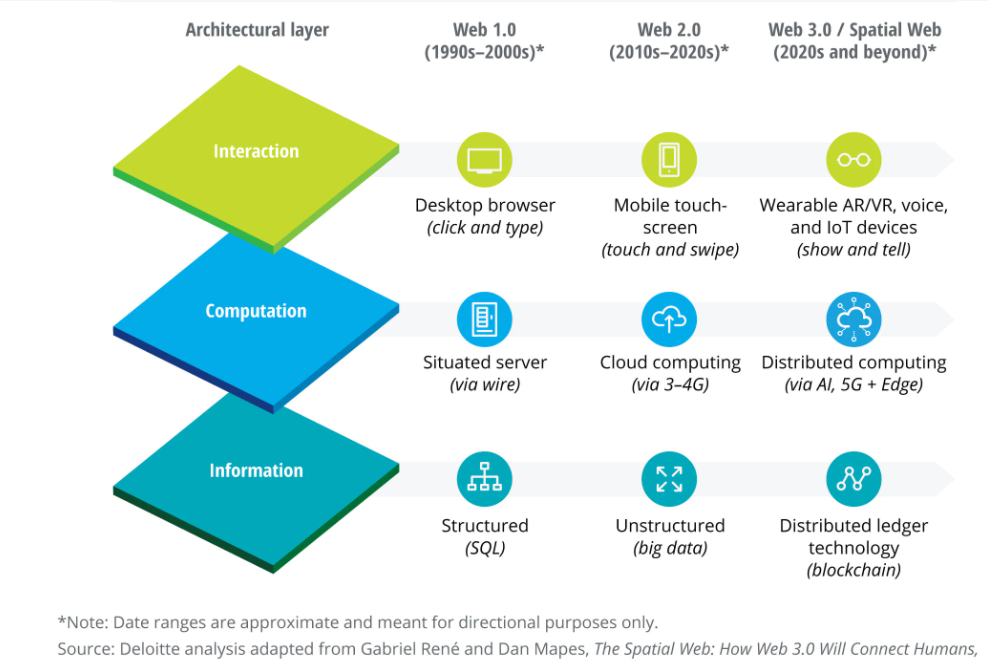
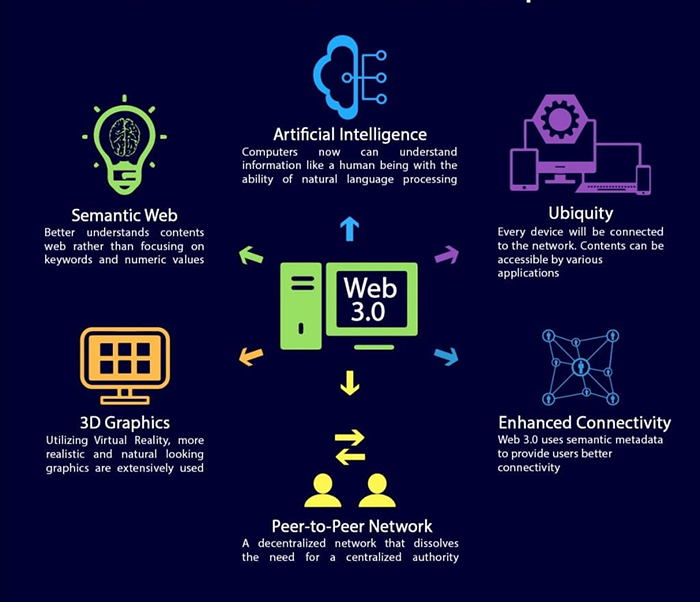
A well-defined Web 3.0 data access protocol has to meet specific capabilities:
1. Data Access In Web 3.0, there is a higher level of information connection facilitated by semantic metadata. As a result, the user experience evolves into a new level of connectivity that leverages all available information. Internet content and services can be accessed anywhere via devices rather than exclusively via computers and smartphones. Web 2.0 is already universal in many ways, but the development of IoT devices will propel it to new levels. We no longer rely only on our traditional desktop pcs to access the internet via web browsers. Our home devices such as TVs, music systems, cell phones, smartwatches, and even cars are now internet-connected. The web is present in everything we do, giving rise to exponential growth in data and the creation of highly accurate and extensive data-based profiles of everything users do.
2. Query Records Based On Attributes The next frontier of the Web is the Semantic Web. The Semantic Web upgrades web technologies to generate, share and connect information through search and analysis by focussing on the meaning of words rather than by keywords or numbers. Artificial Intelligence: By coupling semantic capabilities with natural language processing, computers will understand information on a human-like level to provide faster and more relevant results. As more search data is collected, AI improves in interpreting what searchers are seeking, heightening intelligence and better satisfying users’ needs. AI will soon fit into Internet 3.0, allowing blogs and other online platforms to sift data and tailor them to individual users’ liking. AI will ultimately provide users with the best filtered and unbiased data possible.
3. Navigate the BlockChain Besides introducing machine learning and connecting machines through IoT, web 3.0 runs on decentralized protocols. Therefore, it is essential to find a possible merge of blockchains. Networks in the semantic web exhibit interoperability, automation by leveraging smart contracts, seamless integration, and censorship-resistant storage of P2P data files. Therefore, it is pretty clear that blockchain would serve as a critical driving force. Blockchain plays a vital role in evolving the usual data storage and management approaches. It offers a unique collection of data subject to collective management. This state layer creates the arena for developing a value settlement layer on the internet which sends files in a copy-protected manner to enable effective P2P transactions without intermediaries. Blockchain allows the storage of data in multiple copies of the P2P network. The protocol helps in the approved specification of management regulations in the protocol. Additionally, the protocol guides data security through mass agreement from all participants. Most importantly, it supports the development of a governance layer running over the existing internet. The governance layer allows two unknown people who don’t trust each other to reach agreements and settle transactions over the internet. The functionalities of blockchain would focus on introducing a backend revolution. Technically, web 3.0 is a collection of blockchain-based protocols that concentrate on changing the backend wiring of the internet.
4. Decentralised Governance Data is stored within a peer-to-peer interconnection in a decentralized network. Users maintain ownership over their data and digital assets and can log in securely over the internet without being tracked. Web3 is conceptualized as giving the right of data back to end-users through decentralization. Web3 seeks to build new protocols and infrastructure that allow developers to build apps where users bring their data and where identity is no longer tied to any specific platform. A decentralized web depends on a peer-to-peer network built upon a community of users. Websites and applications are hosted on user-community devices and are later distributed across hundreds of nodes located elsewhere. The Chances of a server crash, hackers taking down a website, or an authoritarian government controlling and censoring opinions are significantly reduced. With blockchain technology, user data is protected and encrypted, preventing large companies from controlling and using users’ data for their gain.
Note: The evolution of web 3.0 calls for a well-defined and established Data Access Protocol for it to level up. One such protocol is The Graph. The Graph is a decentralized protocol that facilitates the indexing and querying of data via ‘subgraphs.’ It optimizes Data acquisition from any supported source, thus allowing efficient querying of blockchain data without relying on centralized service providers. Some of these DAP requirements have been met by isolated technologies. However, hope is pegged on The Graph to put delivery on all these capabilities in a single protocol.
https://news.coincu.com/86919-web-3-0-data-access-protocol-requirements/
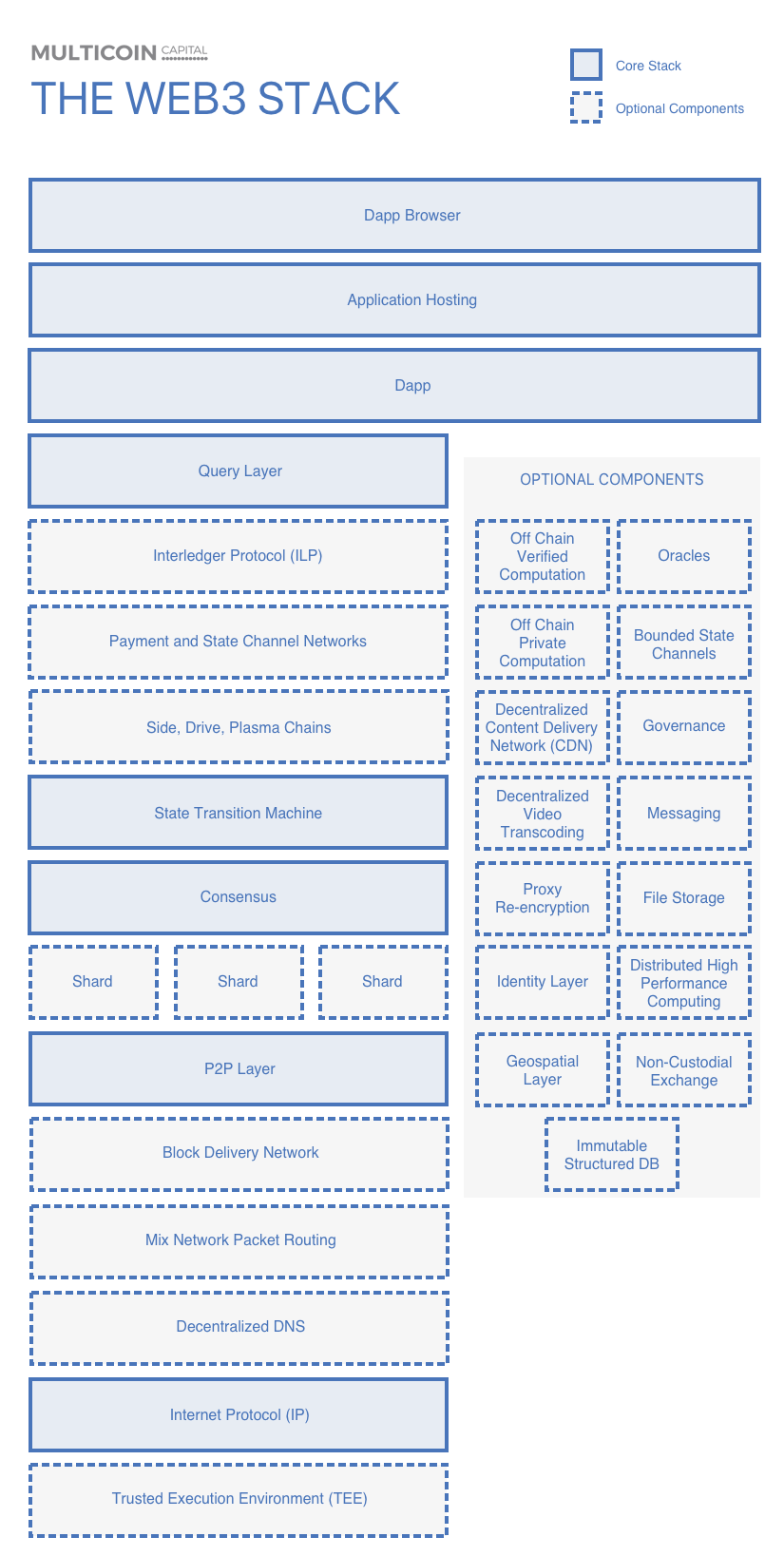
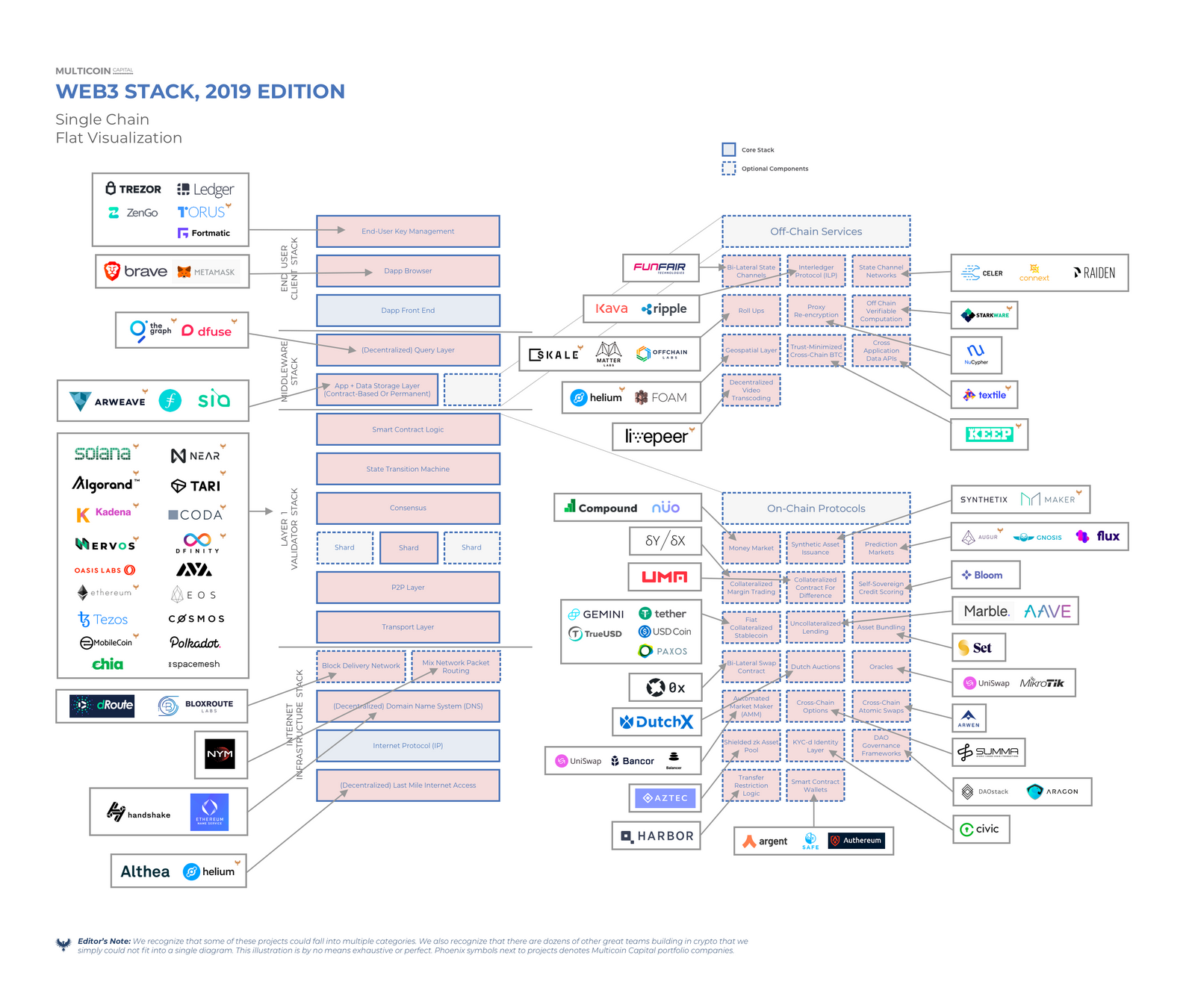
Now let's add in all the disparate parties used to pull this stack together, coordinate its ongoing operations, undertake updates across each subcomponent and assure that nothing goes wrong...
Oh yes, we need to replicate this 10 million times across the world in our decentralised autonomous organisation...
Did anyone consider the underlying implementation architecture? Or the number of attack surfaces through the "Stack"?
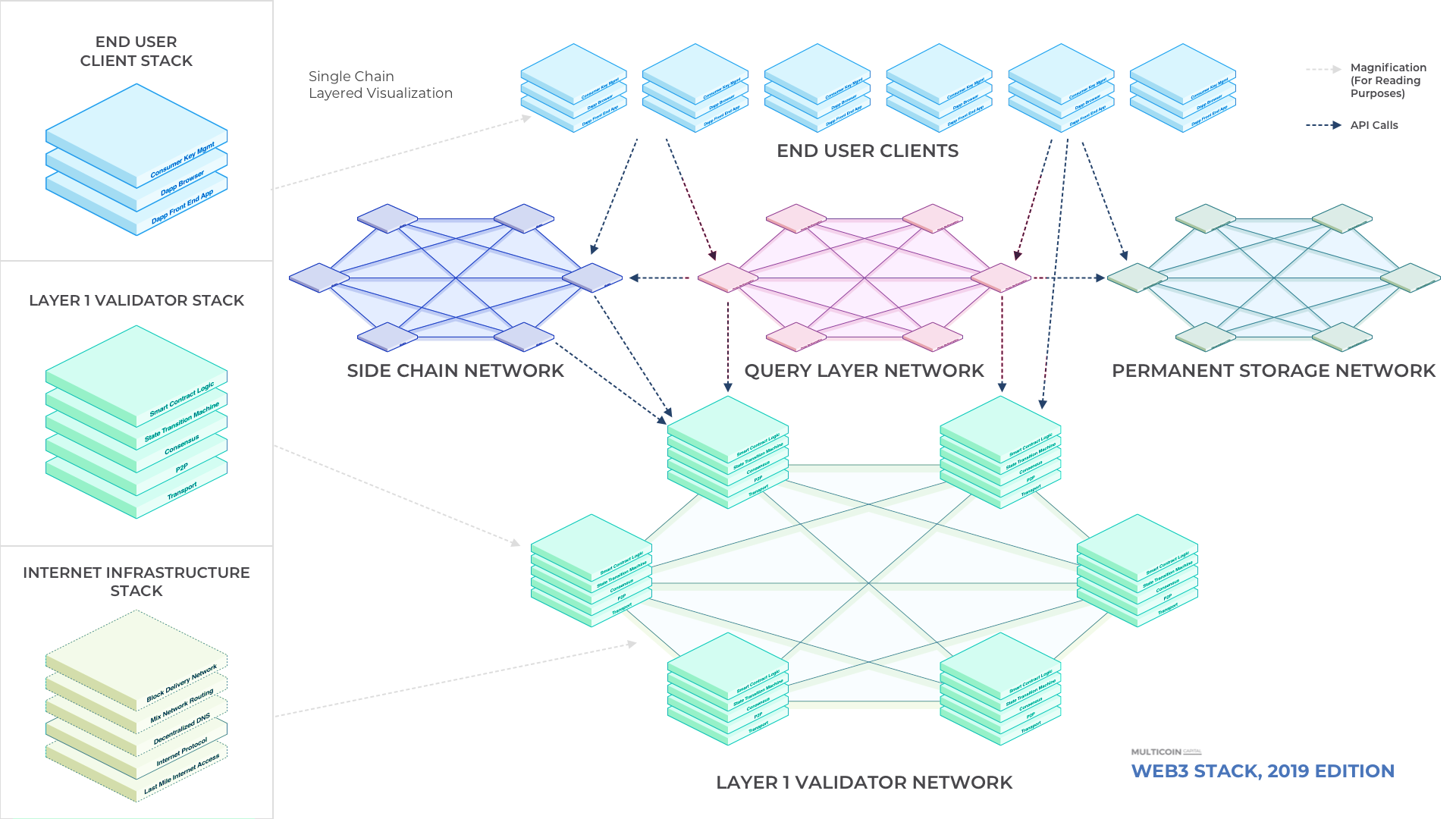
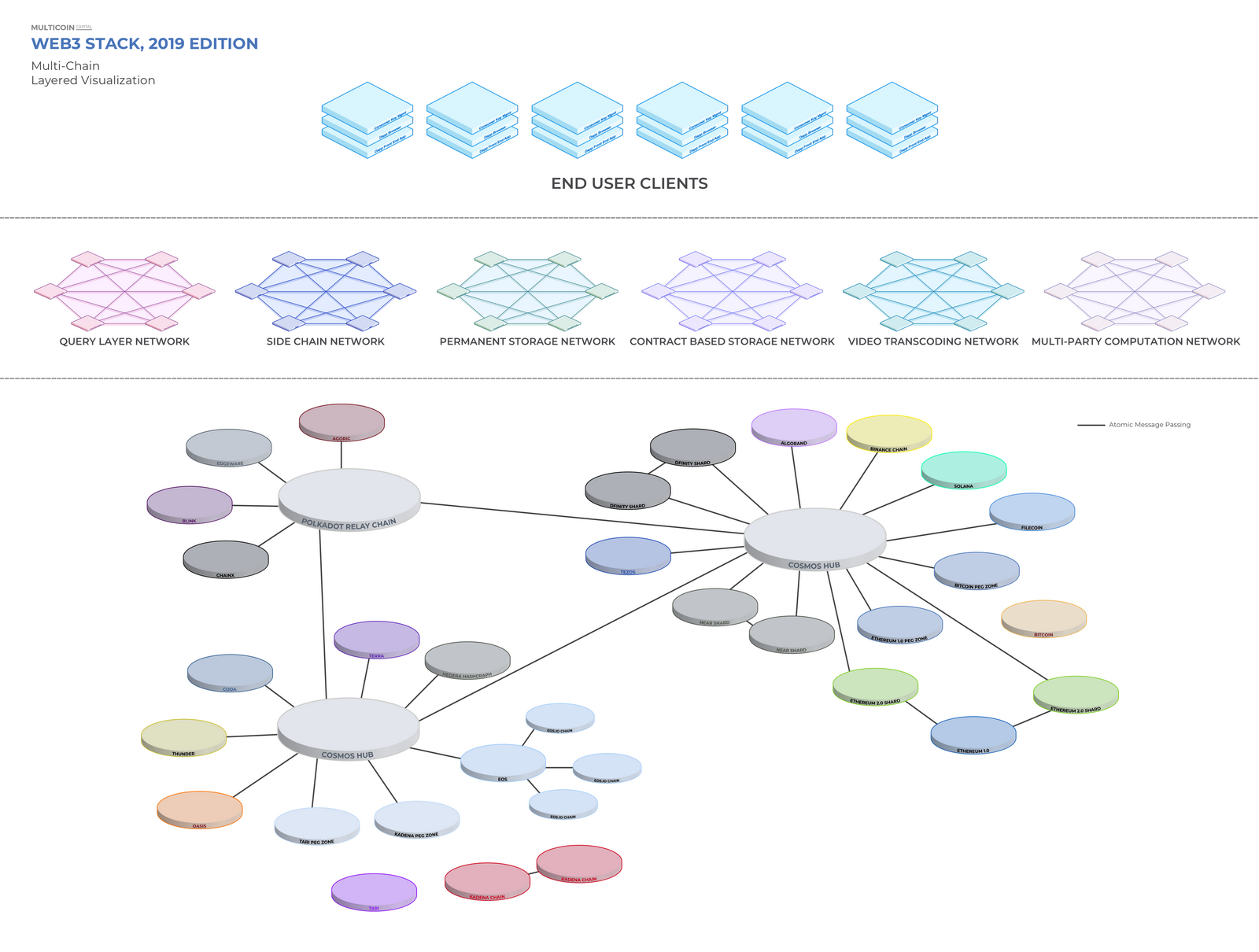
Do we observe a tightly constructed, secure ecosystem-centric delivery platform, or a lot of adhoc components with myriad potential attack surfaces and multiple jurisdictional, regulatory and business risks?
Does this model support and implement the objectives of Web 3.0, or is does it leave open significant exposures for deplatforming, security flaws, incompatibility through version updates to components, incongruity with underlying transport architectures, etc.?
One must ask these questions...
Why does a DAO (decentralized autonomous organisation) so focused on achieving ajurisdictional status subject its capital and value capture structure (Protocol and Tokens) to a centralised exchange through which all of its participants are subject to vast controversy in whether or not their "TOKEN" is a security, its tax position, etc., with the potential for seizure by regulatory authorities or hackers?
How can the underlying transport infrastructure on which the Protocol, Token and Operations reside for implementation and support, be inconsistently and adhoc supported, with no assurance of long term persistance, adequate access by participants, protection from disruptive infrastructure changes and the emerging risks of deplatforming through content tagging and other means across a wide group of cloud providers, who may not be as decentralised as might appear.

In the day, Western Union was a single point of failure for stock market information. If it stopped the service, the market collapsed.
Are not the centralized exchanges just another example of "Big Tech" to come, not consistent with the decentralisation objectives of Web 3.0? Weren't "wallets" and trading between "wallets" the answer to deplatforming and liquidity risk exposures?
One might be reminded of what happened in the last twenty years as innovation gave way to consolidation and loss of privacy and rights to our own data.
With more than 18,000 Protocol Token Series in the marketplace, one might assume there will be consolidation and lots of carnage, perhaps similar to Dot. Com.
Perhaps its time to consider a new approach based on lessons of the past thirty years, remembering at each point our objectives in Web 1.0, 2.0, and now 3.0.
Alliance iii.o represents several perspectives referred to by Dr. Wood above. Alliance iii.o Protocol enables a standardisation of terms between Web 3.0 and trusted parties, legacy systems, and traditional physical world entities.
Alliance iii.o enables a "plug-in" approach to commoditised, verifiable and competitive "Infrastructure Utilities" bridging a "know your counterparty", trusted, regulated, reporting counterpart with a decentralised, trustless, permissionless, self-governing adhoc network architecture.
Alliance iii.o seeks to act as a bridge between parties operating under Web 1.0 and 2.0, transitioning from Web 3.0 and beyond. Where applicable, Alliance iii.o seeks to facilitate "Digital Twin" instances between legacy physical construct ("HOMEWORLD") and full digital constructs, perhaps facilitating legacy activities, but fully implemented in "DIGITALUNIVERSE", without nexus to legacy implementations.
To simplify, a traditional bank operating its activities through physical servers at its bank service providers, could, as an alternative, adopt "digital currency", run banking activities within edge-based architecture on a totally decentralised, autonomous organisation ("DAO") basis, if not for regulatory considerations. If it focused on business activities within a DAO, this digital bank could undertake the full complement of its banking services for DAO based businesses, needing only one or more Infrastructure Utilities as gateways for legacy bridge functionality.
Alliance iii.o seeks to facilitate that bridge between architectures and transitions through time. Its adoption of and synchronicity with Web3.0 are designed to implement "n" networks of replicable instances of Web 3.0 | Alliance iii.o operational examples.